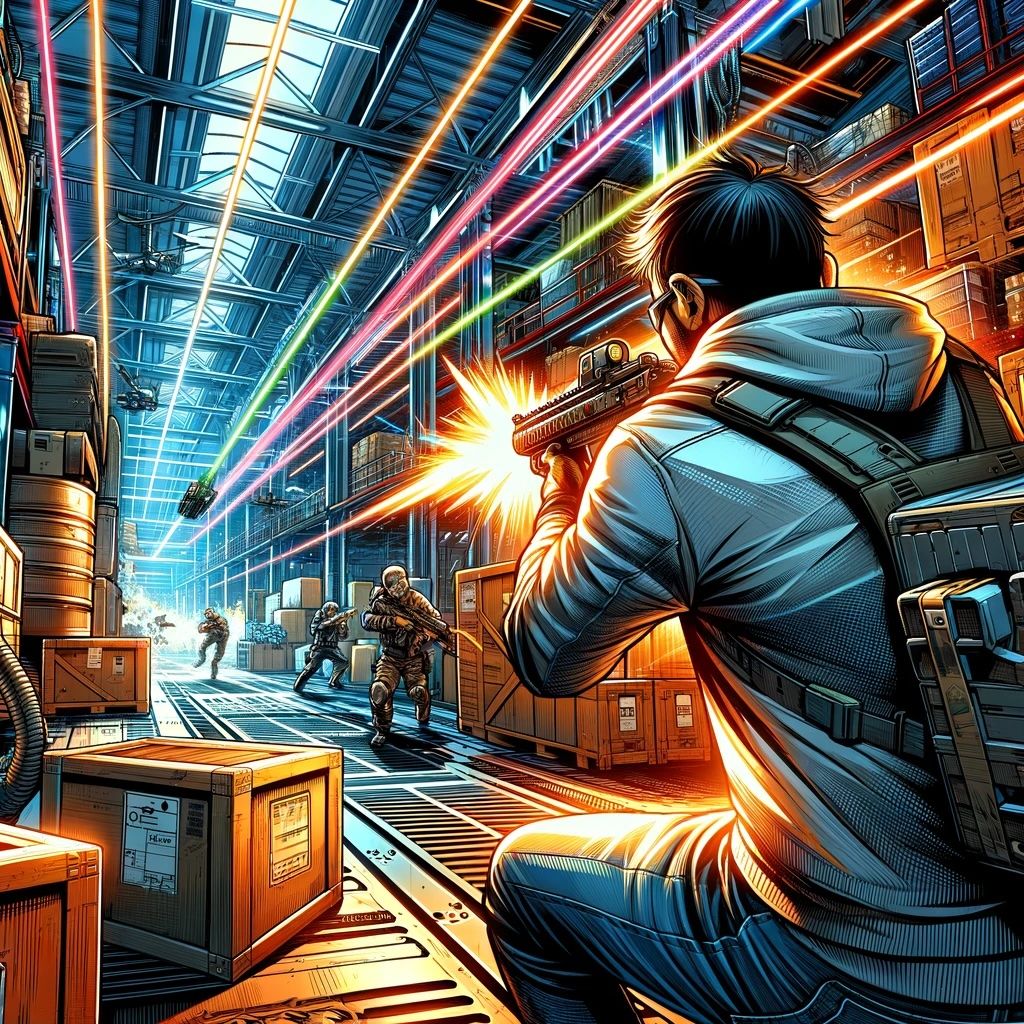RPGs vs Wargames
Over the last month or two, the combat in games like 5 Parsecs from Home and The Doomed has felt much more satisfying for me than traditional RPG combat.
Wargame Combat
These games rely heavily on positioning (particularly around line of sight and cover) rather than make them secondary concerns as D&D and its descendants do. Because characters can be taken out more easily, players must take care to use the environment to its fullest in order to accomplish their objectives and preserve their units.
 Image generated by ChatGPT
Image generated by ChatGPT
They also are much less granular in their combat, with a single hit often being enough to take out a unit. This makes them feel less grindy, where armor reduces the chance that they’ll be taken out but doesn’t simply make them hard to hit in general (leading to the common feeling in RPGs that nothing is happening due to combat whiffs).
I don’t have enough experience with other skirmish-level wargames to draw broader conclusions than this: Wargames have evolved significantly from the old Tactical Studies Rules days, even skirmish-level games with individual characters, and they’ve gotten so much better in the last 50 years.
Exploration
That said, wargames do not handle exploration well, or perhaps at all. In contrast, RPGs like Dungeons & Dragons can really shine here. This is somewhat surprising, since D&D grew from the play interests of 1970s wargamers in the American Midwest.
In the context of D&D, this could mean putting as much effort into exploration procedures and mechanics as combat. Leaving absolutely everything to the GM’s judgment with no procedures does not seem desirable to me, any more than we expect GMs to generate the world without any mechanical support available. We have procedural hex crawls, dungeon stocking tables, etc. Swords & Wizardry Complete has a sidebar on page 75 in the section on dungeon design (thus not player-facing) about exploration procedures; most of the rest is buried in the equipment list and a section on time. Calling out “dungeoneering” rules like secret doors, listen checks, traps, and so on should be player-facing and explicit.
D&D Combat
OSR (Old-School Roleplaying / Renaissance / Revival) games claim to de-emphasize or at least disincentivize combat, although I’m not convinced this works as well in practice. In a game where the most popular class is usually “Fighter”, that rings hollow, and the idea that “rules elide” hasn’t convinced me, either. The games spend a lot of time and space on combat rules, which nerds will put time and energy into learning, optimizing, and eventually extending (see: 3.5e onwards).
In terms of player decisions, many of these games seem to say that the most interesting things about combat are equipment: armor and its effects on damage and movement, weapon ranges and what it takes to wield them, getting the first hit in, etc. This is particularly the case in older editions when attributes had very little effect on a given combat. Old-school gamers often prefer “theater of the mind” battles with no maps or other visual aids (perhaps ironic considering the miniature wargames antecedents). Modern D&D emphasizes beautifully-produced maps, exciting abilities (class features, spells, feats, etc.), and maybe a few dynamic elements in the environment. At its core, however, it’s still “I swing my sword, the orc swings its axe, and we see who runs out of hit points first”.
Other Approaches
I do like the idea of de-emphasizing combat significantly, not by trying to make it “un-fun” the way many OSR games approach it, but perhaps by making alternative approaches more rewarding (and possible). This could include negotiation, stealth, environmental manipulation, trickery and deception, or magic - most of which D&D-alikes leave entirely to the GM’s discretion, which is to say that the game as designed doesn’t support them. (In play, this can be a different matter, and the myriad approaches to stealth or social encounters demonstrate this.)
Other games take different approaches here. Narrativist games emphasize the role of the conflict in shaping the larger narrative. In fact, one friend (semi-?) jokingly defines “storygames” as “games that don’t have a separate combat subsystem”. Games like Trophy Gold and Dungeon World focus on group collaboration and GM prep that is explicitly focused on supporting improvisation. This takes combat from “how do I win?” to “how do we make this interesting?”. That applies as much to the specific fight as to what that fight means in the larger context of the game.
I’m also thinking about how I could import other wargame approaches. What if you used The Doomed as the combat system in a larger RPG? It might play a role akin to Chainmail in OD&D, with other procedures built up around finding the horrors to fight and equipping the warband, as well as contextualizing the battles within a world and specific character goals.
Conclusion
My focus here isn’t on treating some games or approaches as “better” in any broad sense, but rather on thinking about what I want in a given game and what specific stories or mechanics engage me more at a particular point in time. To paraphrase Rick Rubin, I’m trying to design and play games that make me happy, and hopefully that will do the same for some subset of people.

